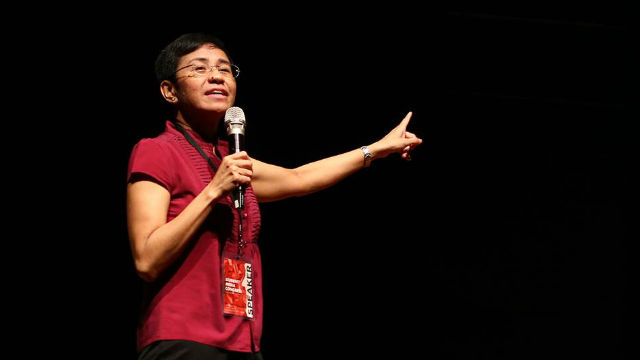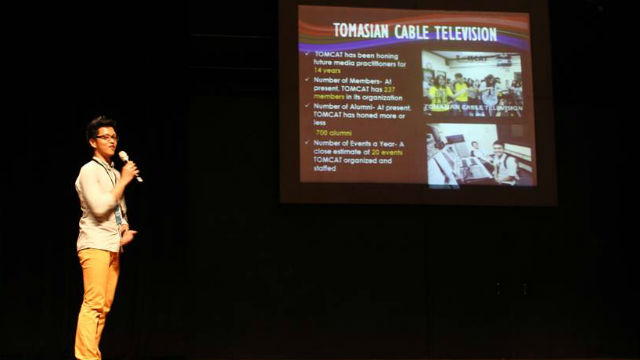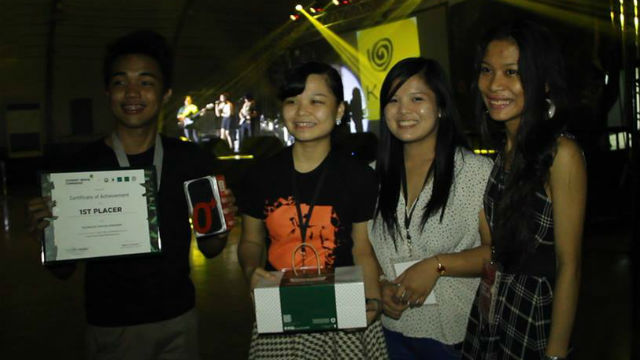SUMMARY
This is AI generated summarization, which may have errors. For context, always refer to the full article.

MANILA, Philippines – What will Philippine media be like in the next 20 to 50 years? How can young media practitioners and students adapt to the changes that will occur?
Leading media professionals and students gathered to answer these questions at the 1st De La Salle University Student Media Congress (DLSU-SMC) 2013, held on July 26 to 27 in Manila.
“Exploring Media Breakthroughs” served as a platform for experts and students to discuss the changing media landscape in the Philippines.
Organized by the DLSU Student Media Office (SMO), more than 1,000 students from 50 universities nationwide attended the event.
SMO Director Randy Torrecampo said the event was aimed at helping students adapt to the advent of social media.
“As campus journalists or as campus media practitioners, they (students) have to go where the audience is. (Students need to have) more awareness on the potential of social media with regard to how they can reach out to their audience,” said Torrecampo.
Power of one
Rappler’s Maria Ressa, who gave the keynote address, discussed the power of social media and its influence on society.
“The makeup of people on social media is the same as the makeup of people in our society…The moment you have one dissenter, other people in the mob stop and think,” Ressa said.
She added that social media can be used as a tool for positive change.
“All you need is a small group of people committed to positive change and you can change the world.”

Adapt or die
Philippine Daily Inquirer (PDI) Senior Editor John Nery talked about the changing world of print.
Nery said that the print journalism industry is on a downward spiral in several parts of the world. He added that while there is still industry growth in the Philippines based on their company’s study, newspapers are slowly moving to online platforms to attract a younger audience.
“(The) newsprint industry is slowly migrating to the digital edition… Yes, print newspapers will still be around a few years from now. But they will be fewer,” said Nery.
Media experts and practitioners from various media platforms also shared their insights and experience with the students.
InterAksyon Managing Editor Jaemark Tordecilla talked about engaging online communities; Manila Broadcasting Company (MBC) Associate Vice President Val Victa discussed the history and future of radio; and ABS-CBN Head for Marketing Nandy Villar explained the importance of content for television.
The second day of the conference was packed with master classes and workshops conducted by media professionals.
Rappler’s Marites Vitug and Gemma Bagayaua-Mendoza discussed advocacy journalism and how online news portals crowdsource the voice of the readers, respectively.
Also among the second day speakers were ABS-CBN’s Ted Failon and Chiara Zambrano, and celebrities Ramon Bautista, Boy Abunda and Juana Change.
‘Great’ learning opportunity
Conference participant and former Rappler intern, Ervin Aroc, said the congress made him realize the power he has as a student.
“The congress opened a lot of new learnings to me. (I realized) that the power of students to create and consume media is insurmountable,” Aroc said. “(I realized that) a young mind like myself should contribute my part to media and be responsible in handling it…The speakers made us realize the power of social media and how it can foster positive change in society.”
He added that he felt more responsible as a consumer and producer of social media.
“The future of media is still evolving. I will be careful in handling data, creating stories and pushing agendas.”

Recognition
The participants also joined contests that tested their skills in new media, production and news writing.
The following topped the different categories:
- Feature Writing: Jamie Cornista (DLSU)
- Web Design: Jireh Medina (DLS-College of St. Benilde)
- Technology Writing: Clyde Antes (DLS-CSB)
- News Writing: Gerald Gloton (University of the Assumption)
- Branding for Magazines: Joseph Auxillian (DLS-CSB), Racey Baluyot (DLSU), Una Kapunan (DLSU), Emmanuel Sambayan (DLSU Lipa)
- Television Production: Camille Bernabe (DLSU), Kareena Sulit (DLS-Dasmarinas), Alandale Palisoc (Malayan Colleges Laguna), Jisallyn Acosta (DLSU), Brigida Morgan (College of Holy Spirit Manila), Bernadine Lacdan (MCL), Krisjord Dungo (MCL), Charis Patricio (DLSZ)

Ripples in media
Project head Joanna Queddeng is hopeful that the conference will inspire students to create sustainable solutions to society’s problems through the use of social media. She also hopes the delegates will become more responsible Filipino netizens both online and offline.
“It’s about time people gather and share ideas about what’s happening,” said Queddeng.
She added that the organizers are excited to see how the participants will create ripples of positive change in their communities through media. -With reports from Ange Pascual and Mica Romulo/Rappler.com
Add a comment
How does this make you feel?
There are no comments yet. Add your comment to start the conversation.